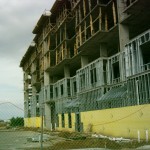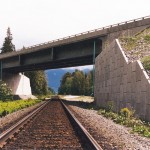The True Cost of Precast Concrete
Editor’s note:This story was first published in the National Precast Concrete Association’s magazine, Solutions, in 2006.
Precast concrete has gained market share in the growth sectors of buildings and transportation because the marketing and selling strategy has moved off price-fixation and onto the Total Cost of Ownership (TCO). Price is not the determining factor. Would you pay a higher price if it bought a lower cost? The Lasik surgeon who advertises “Bring in one eye at full price and get the other one done for a penny” is still waiting for takers.
Price does not equal cost
In fact, price is just one element of cost and only an initial one. To an owner, consumer, or investor, TCO is the sum of the costs of Quality + Service + Delivery + Price. Construction is a long term capital investment in which ongoing costs can easily dwarf the initial price. The moral of the Three Little Pigs was that the brick house, while pricier, sure provided the lowest cost. Just imagine if there had been a precast alternative at the time!
Marketing and sales
When I ask precast pros what they sell, usual responses include, “Manholes, hollow core, grease traps, wall panels, vaults, ornamentals, etc.” While accurate, these answers relegate precast to the commodity world of lowest price. The reality is that precast may come at a higher price but it always brings a lower TCO.
Construction consumers have many choices to solve their problems ranging from traditional cast-in-place and unit masonry, to metals, plastics, and combination systems. To compete with this slate of choices on the basis of price alone is a losing strategy. What is worse, we may even reinforce the customer’s belief, planted no doubt by our competitors, that precast is heavy, ugly, gray stuff. By marketing and selling precast as the lowest TCO solution, we grow the pie, i.e., increase demand. As we have seen in the oil, steel, and cement markets over many years, increased demand means higher profits.
Marketing and sales efforts share a unified strategy of lowest TCO. In the spring 2004 edition of Precast Solutions (Why Precast is the Lowest Cost Choice), we examined the costs of underground precast structure versus cast in place concrete alternatives. Let’s turn our attention to two growth sectors of the precast industry, wall panels and transportation.
Wall panels
Why should the customer pay a higher price for precast wall panel when they can buy a site-built steel stud and brick veneer curtain wall for a lower price? Precast’s Delivery advantage is the greatest cost savings and rationale for it choice. The precast wall panels for a six story building can be ready before the job site can accept them. These panels can then enclose the entire structure in about three weeks. To enclose the same building with steel studs and sheathing, then scaffold the structure to lay tens of thousands of brick by hand, one by one, will take about three months – four times as long. This time savings creates a tremendous cost reduction advantage for the investors. From the moment they decide to proceed with design, the single minded objective is opening the doors and collecting revenue to recover the investment.
Transportation
Precast is the material of choice for retaining walls, beams & girders, pavement slabs, and drainage structures for airports, railroads, naval ports, and especially highways because of its great time savings. In major urban centers around the US, DOT’s are upgrading the interstate, state, and local highways to relieve the traffic choked congestion.
Take the example of a new on-ramp for an urban highway with four existing lanes in each direction. To build the ramp, bridges, pavement, drainage structures, and retaining walls in cast in place concrete might require a crew of 25 carpenters, 20 laborers, 5 rod busters and a few months of false work. Then add a fleet of concrete trucks, pumps, cement masons, and traffic control details to get the ramp completed.
Contrast this high cost scenario to having all concrete components cast off site in certified plants. Instead of tying up the highways for months and exposing commuters and workers to unnecessary risks, trailers of precast and a small crew with heavy lift cranes accomplishes the work in a fraction of the time, generating huge dollar savings to the local economy and lopping off hundreds of thousands of unproductive hours for commuters. And, we have not yet accounted for the Quality and Service cost advantages.
Quality
While the Delivery issue is perhaps the cost advantage closest to the investors’ wallets, Quality and Service are close behind. The inherent Quality of precast over competitive systems is exemplified by its superior thermal, moisture, sound, and fire resistant characteristics. Although shared to a greater extent by cast in place, and a lesser extent by masonry, precast alone is manufactured under repeatable quality controlled factory conditions with consistent and well trained crews. On the job site, nearly all other competitive systems suffer from understaffed and/or ill trained personnel, subjected to the vagaries of weather, Water/Cement ratio, and field conditions. For most customers, Quality and Delivery are the tandem cost advantage driving the choice of precast.
ServiceThe short and long term Service costs savings round out our lowest TCO advantage. In the long term, precast cost less than wood, metal and glass curtain walls, or the bane of all buildings, plastic veneer systems. The permanence of high quality precast concrete minimizes expensive and ongoing maintenance costs.
Precast distinguishes itself in the short term. The comparatively simple erection of precast wall panels exposes built in place systems as outdated and needlessly complex, with its time consuming and complicated logistics of multiple trades and equipment choreographed over protracted time periods. Precast simply deploys a small crew and a crane and the work is done at a stunning pace, despite the weather.
Literally and figuratively, do the math for your customers and prospects. Show them how the TCO of precast is by far the best value they can obtain. The truth is, It Ain’t the Price; It’s the Cost, Stupid!



